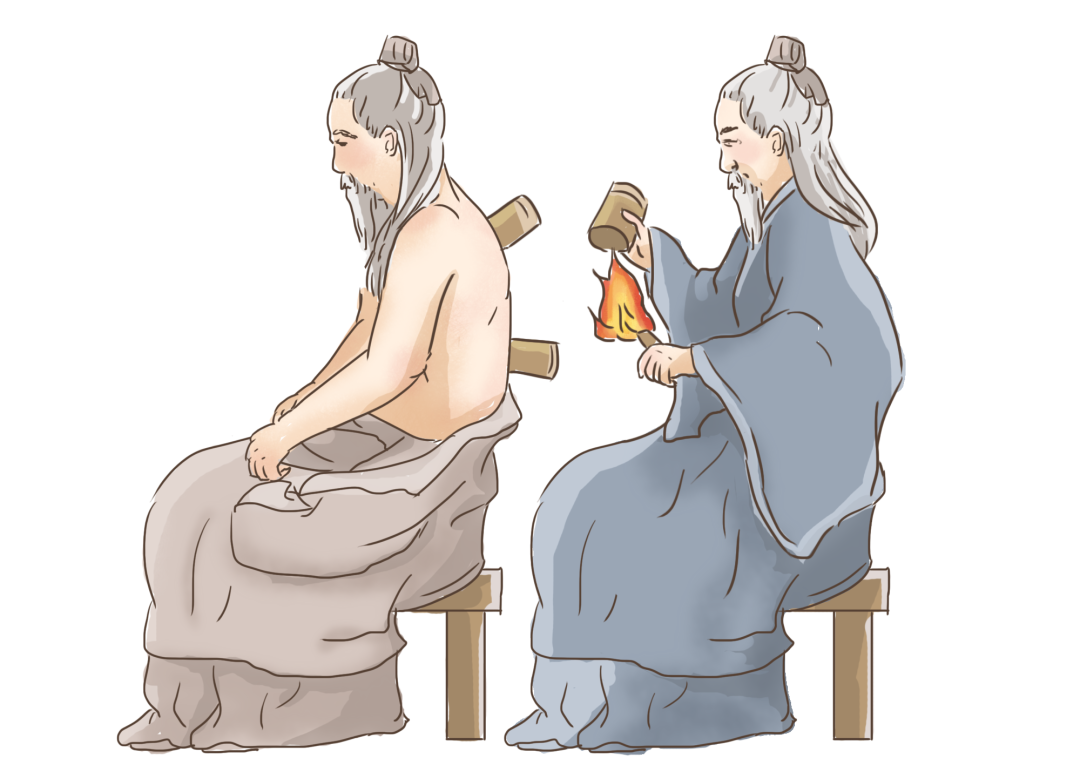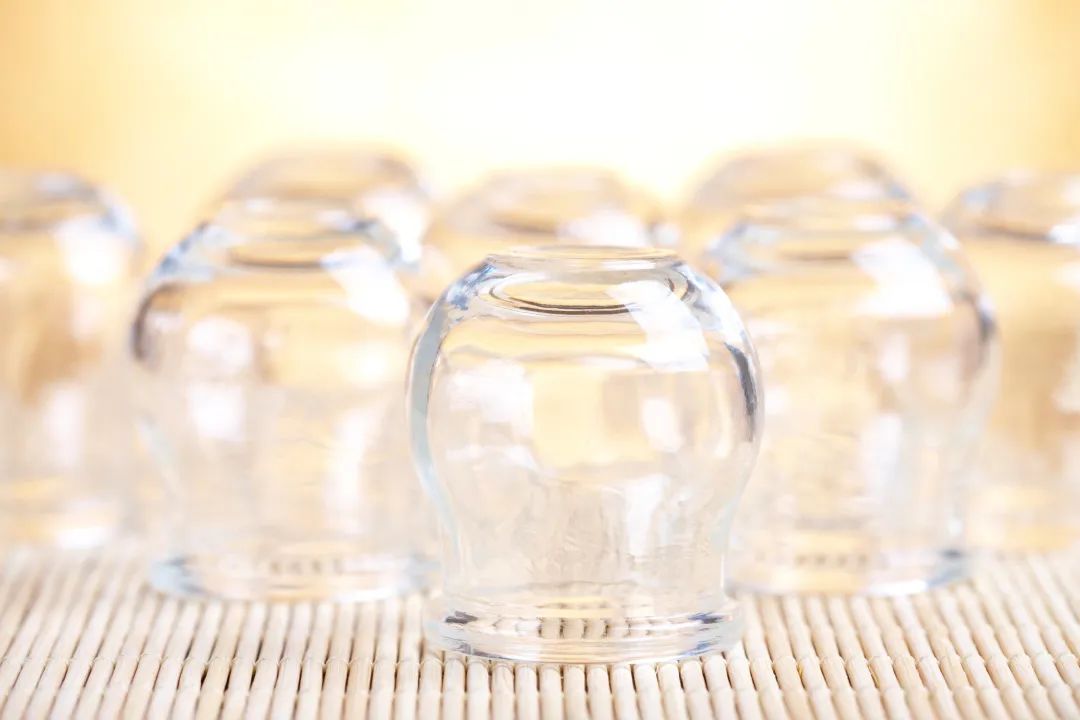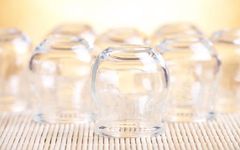
History of Cupping Therapy
Cupping therapy has a long history in China. The earliest records of cupping therapy date back to the pre-Qin period, when people used animal horns (such as cow or sheep horns) to create hollow tubes. After puncturing abscesses, they would use these tubes to suck out pus and blood to achieve therapeutic effects. Because animal horns were used as tools, this method was referred to as “horn therapy”. The earliest written records of cupping therapy can be found in the “Fifty-Two Disease Formulas” compiled in the early Western Han dynasty, where horn therapy was used to treat hemorrhoids. During the Tang dynasty, there were significant improvements in cupping tools, which began to be made from processed bamboo tubes instead of animal horns. In the Qing dynasty, clay pots were introduced, and the term “fire cupping” was officially proposed and has been used to this day. After the founding of the People’s Republic of China, cupping therapy has continued to improve and diversify.

Cupping, also known as “horn therapy” or “suction therapy”, is a method that uses cups as tools to create a vacuum by burning fire or pumping air out, causing the cups to adhere to acupuncture points (腧穴, shùxué) or areas of the body. This results in local skin congestion and bruising, serving as an external treatment method in Traditional Chinese Medicine (TCM) to prevent and treat diseases and strengthen the body.

Glass cups are commonly used in clinical practice. They are made from heat-resistant, hard, transparent glass and come in various sizes based on the diameter of the cup opening and the internal cavity. The smooth, transparent surface of glass cups allows for direct observation of changes in the local skin during use, making it easier to control the duration of treatment. They are often used in fire cupping methods, particularly suitable for moving cupping, flash cupping, needling cupping, and needle retention cupping.
Applications of Cupping Therapy
Depending on the location of the lesions and the nature of the disease, there are different methods of applying cupping therapy.
1. Single Cupping Method
This involves using a single cup. It is applied to conditions with a clear and localized area of lesions or fixed tender points.
2. Multiple Cupping Method
This involves using multiple cups simultaneously, also known as the排罐法 (pái guàn fǎ). It is suitable for conditions with a wide range of lesions or multiple selected points. Multiple cups can be applied to several areas or acupuncture points, often arranged in a sequence along a specific meridian (经脉, jīngmài) or muscle bundle.
3. Retained Cupping Method
Also known as the sitting cupping method, this involves leaving the cup in place for 5-15 minutes after cupping, allowing the superficial skin and muscles to be drawn into the cup. Mild cases result in skin redness, while severe cases may lead to subcutaneous bruising.

4. Flash Cupping Method
This method uses the flash fire technique to apply the glass cup to the area, then immediately removes it, repeating the process until the skin becomes red or the bottom of the cup feels warm.
5. Moving Cupping Method
Also known as the pushing cupping method. The procedure involves applying a lubricant (preferably petroleum jelly or moisturizing cream) to the cupping area, and the cup’s opening is also coated with oil. After creating a vacuum with the flash fire method, the cup is held at the bottom, slightly tilted back, and moved along the muscle, bone, or meridian pathways until the skin in the cupping area turns purple-red.
6. Needle Cupping Method
This refers to a treatment method that combines acupuncture (针刺, zhēncì) with cupping therapy.
(1) Retained Needle Cupping Method, abbreviated as needle cupping. This involves placing a cup over the area where a needle has been retained for 5-10 minutes. Once the skin is red and congested, the cup is removed, and the needle is withdrawn. This method enhances the effects of both acupuncture and cupping. However, it is not suitable for the chest and back areas, as the negative pressure inside the cup may deepen the needle’s insertion, potentially causing pneumothorax.
(2) Bloodletting Cupping Method, also known as the刺络拔罐法 (cì luò bá guàn fǎ). After disinfecting the skin at the treatment site, a three-edged needle is used to prick the skin to induce bleeding. The cup is then applied to the pricked area to draw out blood, enhancing the bloodletting treatment. The amount of blood drawn depends on the condition, ranging from a few drops to 3-5 ml. Generally, the cup is retained for 10-15 minutes after bloodletting.
Diagnosis Based on Cupping Marks
1. Cupping marks that are dark purple indicate blood stasis or significant local cold exposure. This may occur in conditions such as shoulder and back pain, dysmenorrhea, or insufficient blood supply to the heart. If the marks do not fade after several days, it usually indicates a chronic condition that requires a longer time for recovery.
2. If blisters appear on the skin after cupping or if there is moisture inside the cup, it often indicates excessive dampness in the body. If the blisters contain blood, it suggests a reaction to damp-heat toxicity.
3. Cupping marks that are dark purple with bruising indicate poor circulation of qi and blood, and cold congealing with blood stasis.
4. Light purple cupping marks with patchy areas indicate a deficiency pattern combined with blood stasis.
5. Cupping marks with scattered purple spots of varying shades often indicate qi stagnation and blood stasis.
6. Localized skin that is red after cupping suggests a heat pattern, while some individuals with yin deficiency may also show red cupping marks.
7. Cupping marks with no significant color change or appearing grayish-white and feeling cool to the touch often indicate a deficiency-cold pattern.
8. Bright red cupping marks generally indicate yin deficiency or a deficiency of both qi and yin, with signs of yin deficiency heat.
9. Cupping marks with wrinkles or accompanied by itching or wheals suggest a wind pattern, often due to external wind or dampness invasion.
10. If cupping marks disappear immediately after removing the cup or return to normal color, it usually indicates a mild condition.

Benefits of Cupping Therapy
1. Enhances the body’s immune function.
2. Improves skin temperature, accelerates metabolism, and promotes faster recovery from illnesses.
3. Alters blood oxygen levels and regulates immune function.
4. Accelerates the elimination of metabolic waste and promotes blood circulation.
5. Unblocks meridians (经络, jīngluò), relieves fatigue, and reduces stress.
— END —


